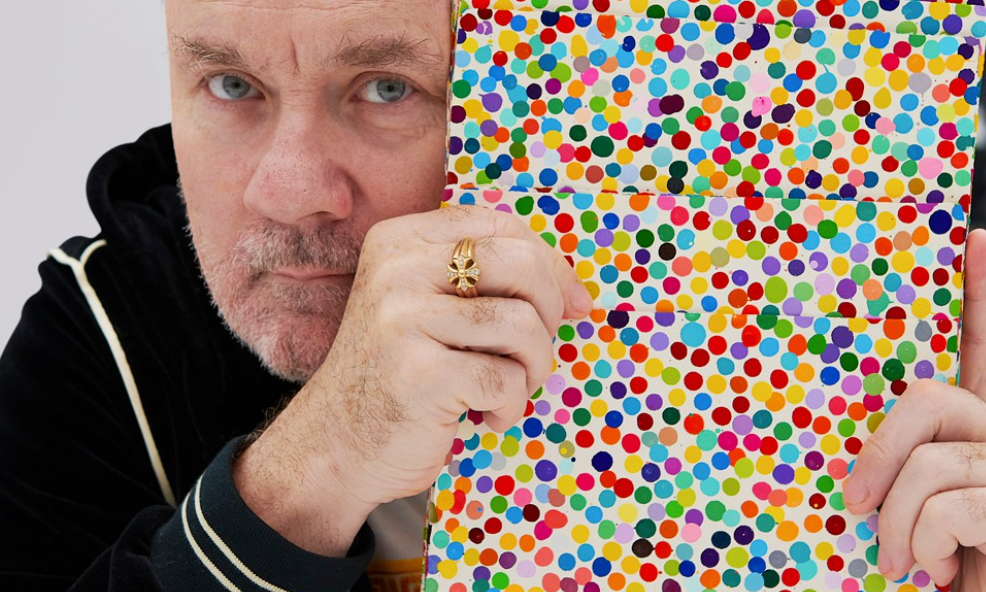Works from Damien's Hirst's The Currency dated to 2016 have been revealed to have been made in 2018-19
© Damien Hirst and Science Ltd, DACS 2021. Photo: Prudence Cuming Associates Ltd
Damien Hirst has once again come under scrutiny for backdating his works. A Guardian report published yesterday reveals that at least 1,000 of the oil paintings on paper created for a recent NFT project were not made in 2016, as the artist stated, but were in fact mass produced in 2018 and 2019 by dozens of painters hired by Hirst’s company Science Ltd at two studios, in Gloucestershire and London. One source described it as a “Henry Ford production line”.
In total, 10,000 paintings were made for The Currency project, each marked with a microdot, an embossed stamp of authenticity and a pencil-written title, date and signature on the back. When the project launched in 2021, Hirst and Heni, the publishing platform run by Hirst’s business manager, which was authorised to sell the works, repeatedly said the paintings were “created by hand in 2016”.
Intended to “explore the boundaries of art and currency”, as Hirst told The Art Newspaper in March 2021, The Currency was conceived as an NFT project—each painting was tied to a corresponding digital token. Buyers had the option to purchase one of the 10,000 NFTs for $2,000 each, and were then asked to choose whether to keep it or trade it for the physical work. The initial sale fetched around $18m.
For those who chose the NFT, numbering into the thousands, their corresponding work on paper was burned by Hirst at his Newport Street Gallery in October 2022
According to one collector who opted for the physical painting, there was no certificate of authenticity issued when he picked up the work from Heni’s Soho headquarters. The day he opted to keep the painting, the NFT was removed from his metamask wallet and all email links, including the one to his receipt, went dead.
Traditionally, dates attributed to works of art are widely understood to refer to the year they were completed, but lawyers for Science and Heni say it is “usual practice” for Hirst to date works according to when they were conceived. They did not dispute that at least 1,000 of the paintings the artist said were dated 2016 were in fact painted several years later. According to the Guardian’s sources possibly "several thousand" paintings were made in 2018-19.
Hirst’s lawyers had a similar response in March when the Guardian revealed that several formaldehyde sculptures were dated by his company to the 1990s, despite being made in 2017. "Artists are perfectly entitled to be (and often are) inconsistent in their dating of works," they told the Guardian at the time.
As for The Currency, it remains to be seen whether the dating issue will affect the paintings’ value. To date, around 100 have been resold at auction—all of them bearing the date 2016, according to Artnet's price database. Prices have ranged from around £5,000 to £28,000.

